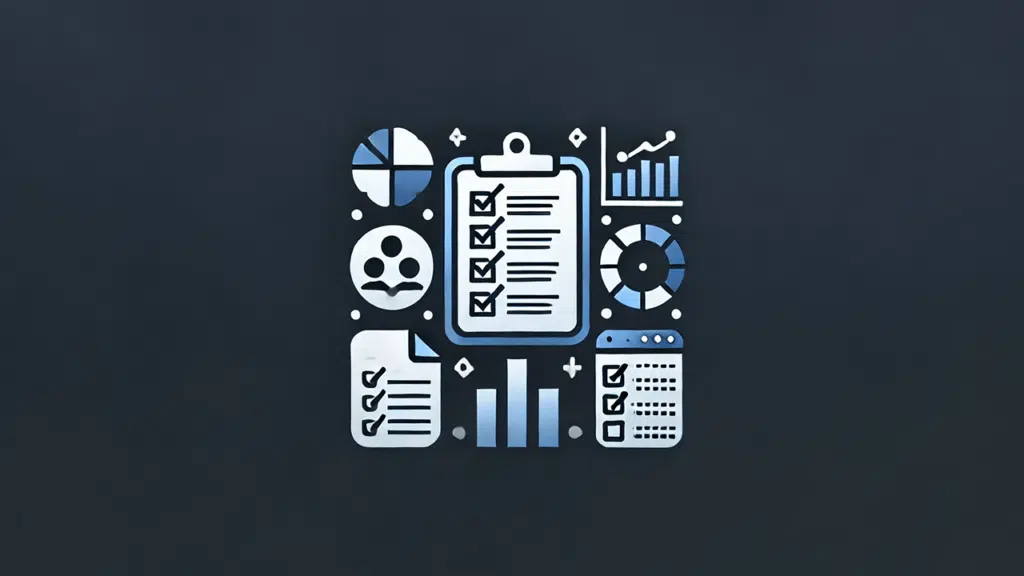Last Updated on July 5, 2024
Heard of Microsoft Planner?
In this guide, I will walk you through the basics of Microsoft Planner, its key features, improvements, and more.
Let’s get started.
Table of Contents:
- What is Microsoft Planner?
- What are its key features and functionalities?
- New Improvements in 2024
- Collaboration and Integration
- Does it have any premium features?
- How much does Microsoft Planner cost?
- How to get started with Microsoft Planner?
- How does it compare with other Microsoft task management tools?
What is Microsoft Planner?
Some of you might have heard about it already. 🙂
But basically, from the name itself, it’s a task management tool for organizing work and collaboration.
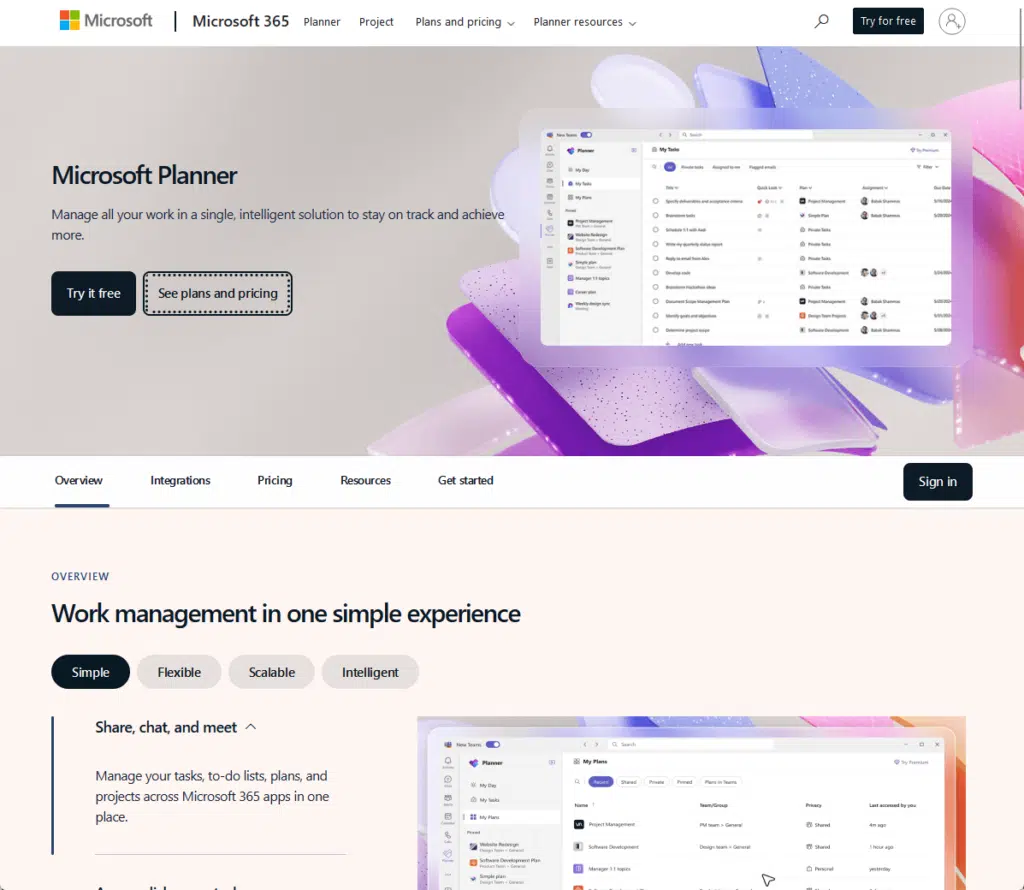
Here’s what you can do with Microsoft Planner:
- Organize tasks: Easily create and assign tasks to team members.
- Track Progress: Monitor the status of tasks and projects in real time.
- Collaborate with Teams: Share tasks and plans, and work together within Microsoft Teams.
Because of its integration, you can make sure that all your work is in one place.
That’s because you can connect tasks from different Microsoft 365 applications, which is really nice in action. 👍
With its help, it makes it easier to keep track of deadlines, assign tasks to team members, and monitor progress.
👉 Related: SharePoint Task Management: Overview of the Options
Sign up for exclusive updates, tips, and strategies
What are its key features and functionalities?
Microsoft Planner is popular as it has plenty of features for task and project management.
If you’re a fan of Trello, you basically have a good idea of Microsoft Planner as it also uses a Kanban board to display a plan.
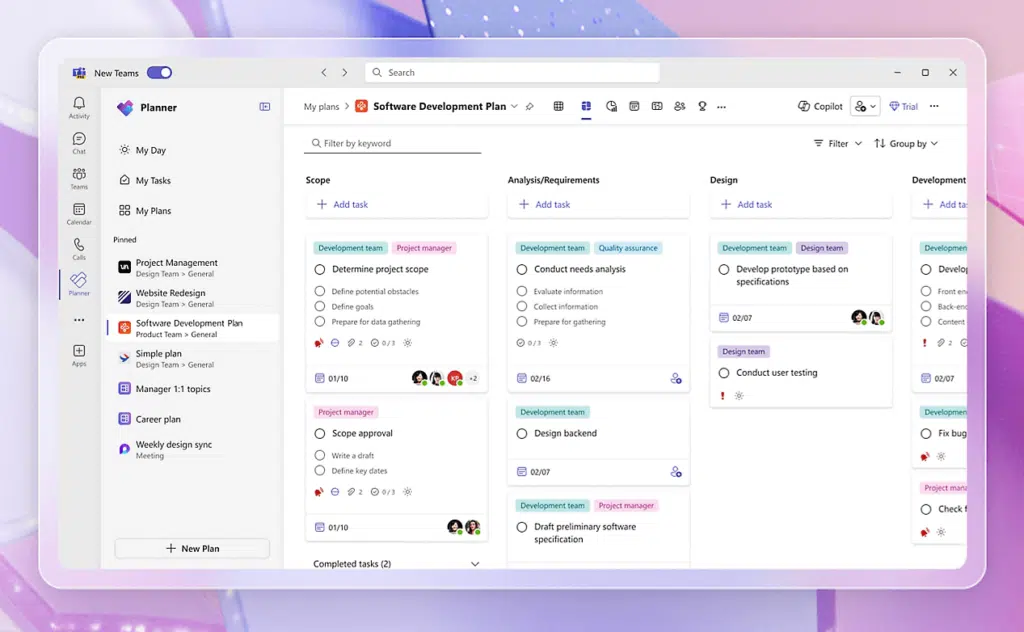
Anyway, its key features are the following:
- Task management: Create, assign, and manage tasks effortlessly.
- Collaboration: Share tasks with your team and work together in real time.
- Views: Choose from boards, lists, and timelines to organize tasks visually.
- Integration: Connect with Microsoft Teams, Outlook, and other Microsoft 365 apps.
- Custom fields: Add specific details to tasks for better organization.
- AI assistance: Use Microsoft Copilot to generate plans and track progress with natural language prompts.
Besides these features, it’s also built to scale from simple task management to enterprise-level project management.
By the way, the AI assistance feature is fairly new, and its addition makes it even easier to manage complex projects. 🙂
Planner also supports custom workflows through Microsoft Power Automate as well as advanced reporting through Power BI.
👉 Related: Introduction to Microsoft Power Automate
New Improvements in 2024
Microsoft introduced a lot of new features to improve its task and project management.
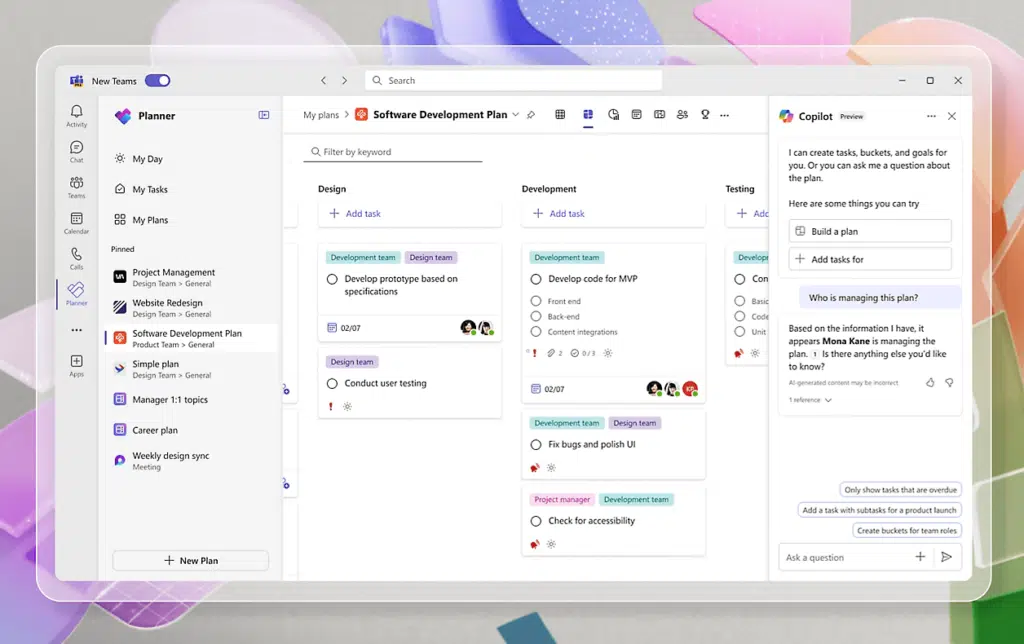
Key improvements include:
- Microsoft Copilot integration: AI-powered assistance for generating plans and tracking progress.
- Unified experience: Combines features from Microsoft To Do, Planner, and Project for the web.
- Improved view: Includes lists, boards, timelines, and sprints for better task visualization.
- Advanced customization: Supports custom fields, task dependencies, and automated workflows.
- Deeper integrations: Better integration with Microsoft Teams, Outlook, and other 365 apps.
The ultimate goal of these updates is to provide a more integrated, flexible, and intelligent experience for users.
Naturally, as artificial intelligence technology improves, we can expect more and better updates here. 🙂
Collaboration and Integration
Planner is designed to improve collaboration by integrating with other Microsoft 365 applications.
Its collaboration features include:
- Task sharing
- Real-time updates
- Comments and attachments
The most awesome here is the real-time updates since it keeps everyone on the same page with instant updates and notifications.
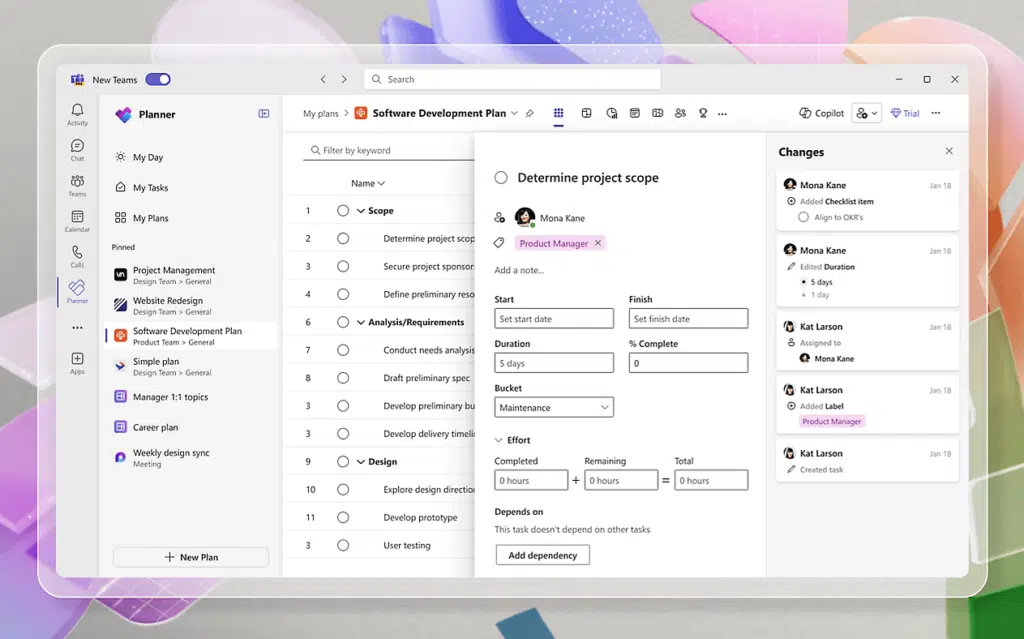
For integration, Planner integrates especially well with:
- Microsoft Teams
- Outlook
- Power Platform
Planner works well with collaboration tools, so team members can share files and communicate directly within tasks.
For Teams, what’s even better is that if you want to manage tasks, you can do it without leaving your team’s workspace.
With its Outlook integration, you would be able to keep track of important emails and action items within your system.
The 2024 update even makes it better as Planner can link tasks with other services like Microsoft Loop and Viva Goals.
Quite literally, all this means is that all your work is connected and accessible regardless of the application you’re using. 😅
👉 Related: Introduction to Microsoft Loop: Notion on Steroids
When Planner was first introduced, it was introduced as part of the Office 365 (now Microsoft 365) suite.
But currently, it now has several premium features that are designed for improved task and project management experience.
Some of the premium features include:
- Timeline (Gantt) view: Visualize your project schedule with a Gantt chart.
- Task dependencies: Set dependencies between tasks to manage project timelines.
- Custom fields: Add specific fields to Planner tasks for more detailed tracking.
- Team workload management: Monitor and manage the workload of your team members.
- Sprints: Plan and manage tasks using agile sprint methodology.
- Advanced reporting: Generate detailed reports with Power BI integration.
I will discuss more on the plans after this, but project plan licenses have access to these advanced capabilities.
In addition, Microsoft Copilot, an AI-powered assistant, is part of the premium offerings, unfortunately.
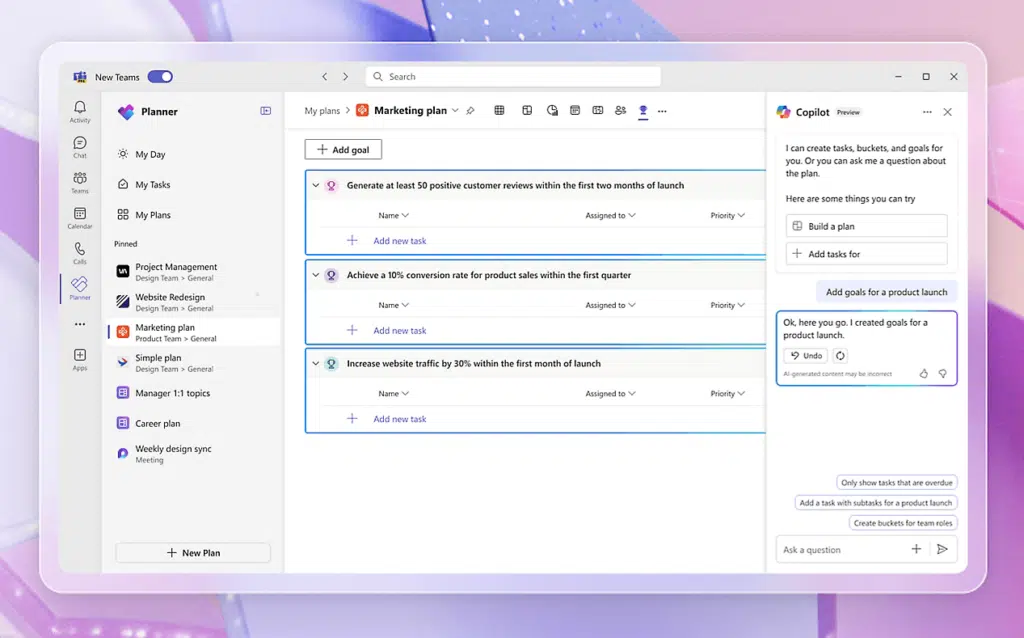
But when you have it, Copilot can help with generating plans, setting goals, and tracking project status with prompts.
👉 Related: Microsoft (Office) 365 in the Cloud: Beginner’s Manual
How much does Microsoft Planner cost?
As I mentioned earlier, Planner is typically included as part of various Microsoft 365 subscription plans.
If you have it, then you can already access Planner, but if not, here are the Microsoft 365 plan options:
- Basic: Starts at $5/user/month, includes access to Planner along with core Microsoft Office applications.
- Standard: Priced at $12.50/user/month, offers additional features like 1TB of cloud storage and email hosting.
- Premium: Costs $20/user/month, includes advanced security features and device management capabilities.
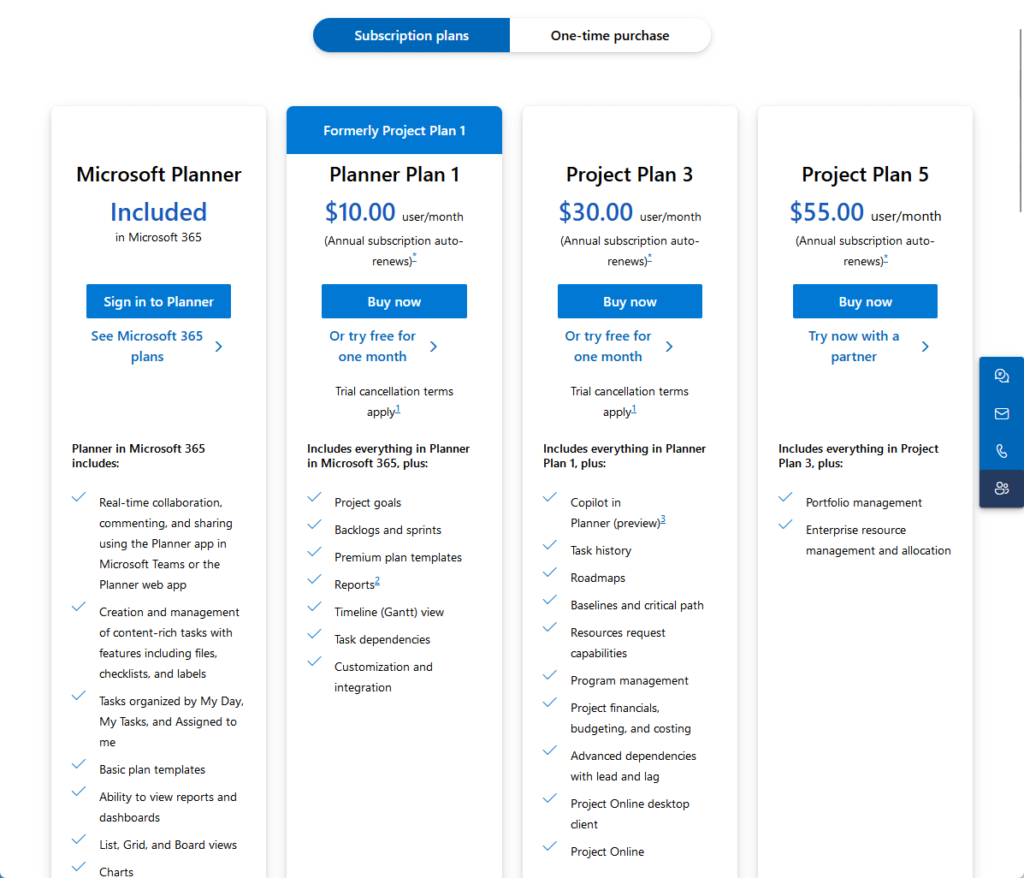
There’s also one dedicated plan for Planner, which is called Planner Plan 1 (formerly known as Project Plan 1).
For $10/user/month, you get:
- Everything in Planner in Microsoft 365
- Project goals
- Backlogs and sprints
- Premium plan templates
- Reports
- Timeline (Gantt) view
- Task dependencies
- Customization and integration
After that, there are other “Project Plans” that also include Project Online in the package.
These plans are:
- Project Plan 3 at $30/user/month
- Project Plan 5 at $55/user/month
PP3 offers more advanced project management features like comprehensive resource management and advanced scheduling.
PP5 has everything in PP3, plus advanced portfolio management, enterprise resource management, etc.
Here’s a table that summarizes them:
| Plan | Price (per user/month) | Key Features |
| Basic Plan | $5 | Core Microsoft Office applications |
| Standard Plan | $12.50 | 1TB cloud storage, email hosting |
| Premium Plan | $20 | Advanced security features, device management |
| Planner Plan 1 | $10 | Premium templates, rich reporting, sprints |
| Project Plan 3 | $30 | Advanced scheduling, resource management |
| Project Plan 5 | $55 | Portfolio management, enterprise resource management, analytics |
⚠️ Note: I didn’t mention it above, but there are also one-time purchase plans available, all are named “Project”. 😅
The plans earlier show that Planner is really accessible for various needs, even for personal, basic task management.
Once again, if you’re part of an organization with Microsoft 365, it’s likely that you have access to Planner already. 🙂
How to get started with Microsoft Planner?
On the bright side, getting started with the Microsoft Planner app is simple and straightforward.
If you already have it, you can simply search for it in the app launcher:
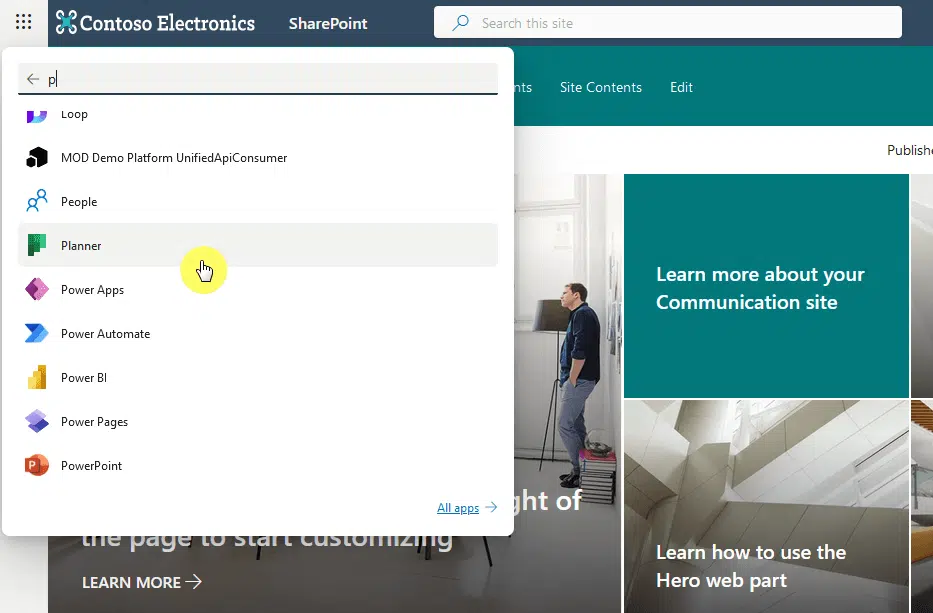
When you get to the Planner itself, things are even easier since it’s intuitive and user-friendly.
For example, you can easily locate the button to create a new plan, which is on the top-left part of the page.
Like this:
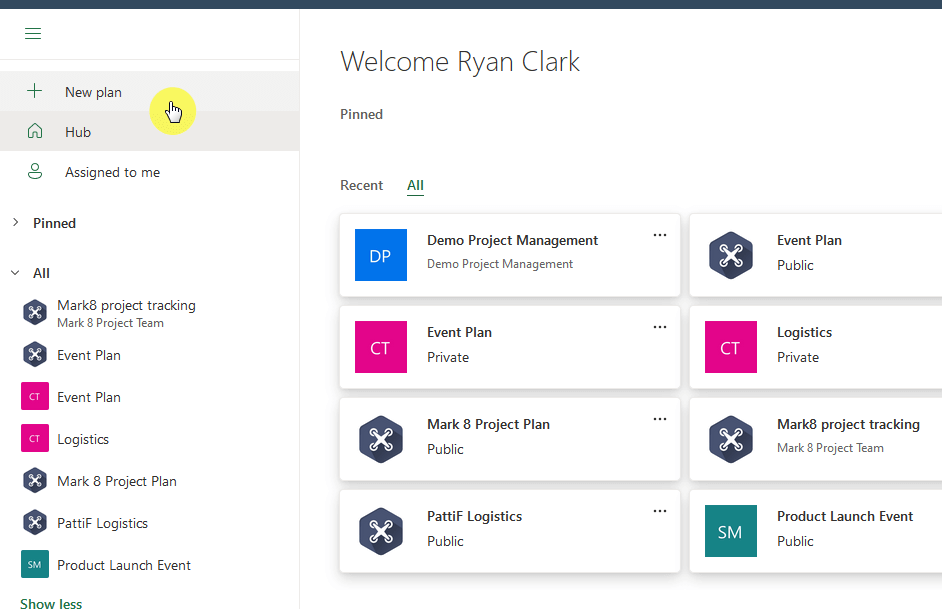
Creating a plan before looks a little plain, and you always have to start from scratch.
In fact, I still have the screenshot of what it looks like when creating a new plan in the old Planner experience.
Here:
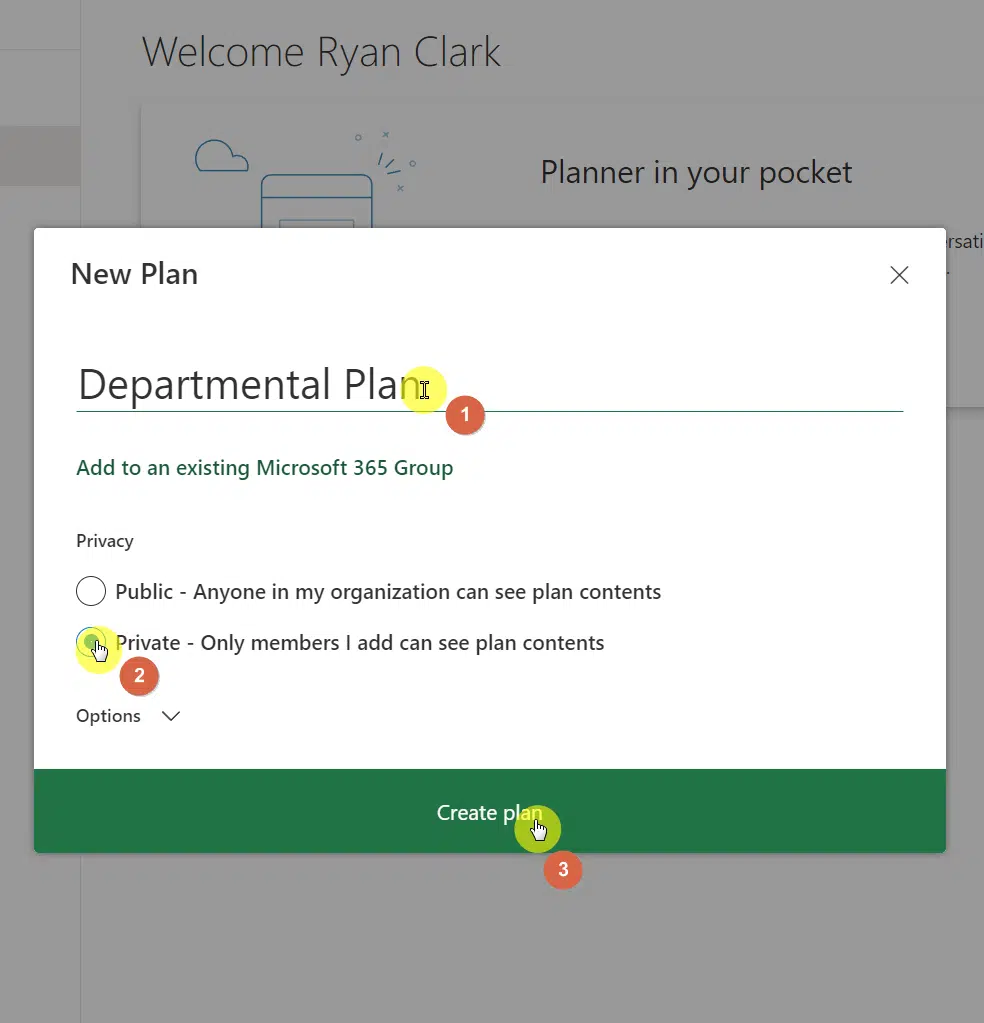
But it’s different now since similar to how it is when creating a new site in SharePoint, you also get templates.
👉 Related: Using Site Design/Templates in SharePoint Online
As of the time I was writing this, there are five templates available:
- Simple plan
- Project management
- Software development
- Business plan
- Employee onboarding
The screen on the new Microsoft Planner looks like this:
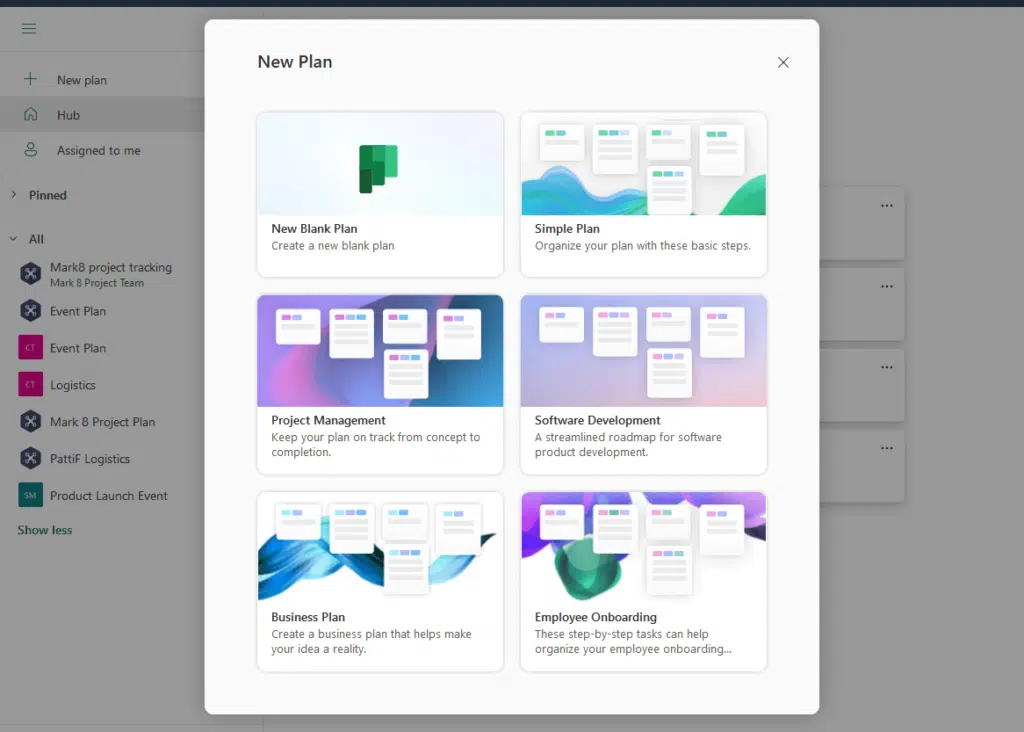
It’s nice! 🙂
Adding in a new task looks a little the same though.
However, I can still see some improvements here in the user interface in an attempt to make it more modernized.
Here’s the screen now when creating a new task:
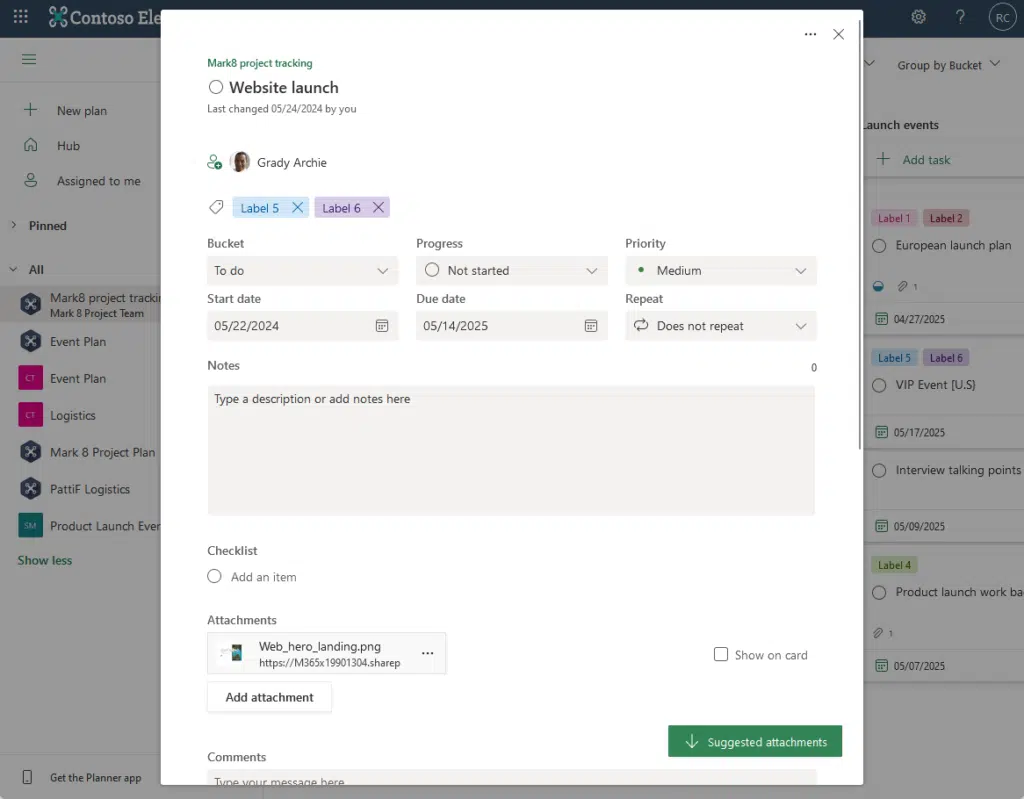
There’s a lot more here that you can do, but getting started is definitely easy even if you don’t have any experience.
Once you have a plan, you can then start adding tasks and organizing them into different buckets.
As mentioned earlier, you can also connect your tasks easily with Outlook, Teams, and other tools that you use.
👉 Related: How to Use Microsoft Planner for Agile Project Management
How does it compare with other Microsoft task management tools?
As you know, Planner is just one of several task management tools available in Microsoft. 😅
But despite some overlaps, each tool has unique features more suited to specific types of task management needs.
Let’s compare Planner with other task management tools:
1. Microsoft Planner vs. Microsoft To Do
Microsoft To Do is probably the tool that’s compared to Planner (at least, the old one) the most. 😅
To Do helps individuals manage their personal tasks efficiently with features such as:
- Personal task lists: Create simple to-do lists for individual tasks.
- Reminders: Set reminders to keep track of deadlines.
- Daily planning: Use the “My Day” feature to plan daily tasks.
- Integration with Outlook: Sync tasks from Outlook emails.
If you’re confused, think of Planner for managing team projects while To Do for personal task management.
It’s perfect for daily task management with its straightforward interface for creating and organizing personal to-do lists.
👉 Related: Microsoft Lists vs Planner vs Todo: When to Use Each One?
2. Microsoft Planner vs. Microsoft Project
Project is designed for larger, more complex projects that require detailed scheduling and resource management.
It has features like:
- Gantt charts: Create detailed Gantt charts for project scheduling.
- Task dependencies: Manage complex task dependencies.
- Resource management: Allocate and track resources.
- Advanced reporting: Generate comprehensive project reports.
You’re right in thinking that Planner has these features too. 😅
But Planner is more for smaller projects or teams that need basic task tracking and collaboration.
Project is more for professional project managers who need advanced tools to plan, execute, and monitor projects.
👉 Related: Microsoft Project Tutorial: Introductory Guide for Newbies
3. Microsoft Planner vs. Microsoft Teams
You most likely know what Teams is, right? 🙂
It’s basically a central hub for team communication and collaboration, and it can integrate with a lot of apps.
Its basic features include:
- Communication platform: Primarily used for chat, video calls, and meetings.
- Basic task tracking: Includes simple task tracking features via Planner integration.
- File sharing: Share and collaborate on files.
- Channels and tabs: Organize conversations and tools in channels and tabs.
Planner is integrated into Microsoft Teams though Planner focuses on detailed task management.
Teams is primarily a communication platform with basic task-tracking capabilities within the context of team meetings.
👉 Related: Microsoft Teams Tutorial: Become a Teams Expert Quickly
4. Microsoft Planner vs. Microsoft Lists
Another addition to the list is Microsoft Lists (no pun intended).
Microsoft Lists is like a standalone SharePoint Lists app that’s great for tracking detailed information.
It has the following features:
- Data management: Designed for tracking information and managing data.
- Customizable lists: Allows the creation of various types of lists (e.g., issue trackers, event itineraries).
- Templates: Offers ready-made templates for different use cases.
- Integration: Integrates with Microsoft Teams, SharePoint, and Power Automate for workflow automation.
Planner is more suited for tasks that require active collaboration and progress monitoring.
Meanwhile, Lists is better for scenarios where you need to track and manage information in a structured format. 🙂
I’m talking here about:
- Inventories
- Schedules
- Contact lists
You can see that although both tools are useful for task management, their specific use cases differ significantly.
👉 Related: Introduction to Microsoft Lists: The Modern SharePoint List
Anyway, got any questions about what Microsoft Planner is? Let me know in the comments.
For any business-related queries or concerns, contact me through the contact form. I always reply. 🙂

